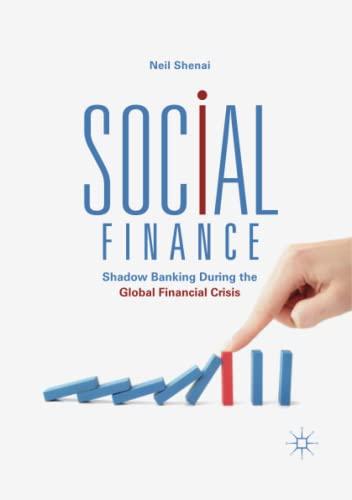Answered step by step
Verified Expert Solution
Question
1 Approved Answer
Dwayne sat at his desk wondering what he should do . Having opted for early retirement, six months ago, he knew that he needed to
Dwayne sat at his desk wondering what he should do Having opted for early
retirement, six months ago, he knew that he needed to make some changes in the way
his investment portfolio was structured. However, being primarily focused on science
during his career, he had a fairly limited knowledge of stock selection and portfolio
management. One thing was certain, though, Dwayne had an eagerness to learn and
thats exactly what he planned to do during his appointment with his broker, Jonathan
Price.
Dwayne Stevenson, aged had joined the Pharmacopia Company
approximately thirty years ago, as a postdoctoral researcher in the field of
immunology. His strong work ethic and knowledge of science enabled him to
progress steadily along the research track of the company. He won a number of
awards and earned many promotions along the way. Five years ago, Dwayne earned
the coveted title of Research Scientist enjoyed by only other individuals in the
corporation. One of the main advantages of gaining the Research status was that
he was given stock options as part of his remuneration package. At that time, shares of
Pharmacopia PCU were trading at $ per share. The company had annual sales in
excess of $ billion and the sales and earnings growth forecasts for the next few years
were good. The company had applied for Food and Drug Administration FDA
approval for two highly promising drugs and had a number of others in the pipeline.
However, as luck would have it about years later, the firm suffered a few
setbacks. The FDA did not approve a couple of its application and the Environmental
Protection Agency EPA was investigating Pharmacopia for possible dumping
violations. Besides, the patents on two of its best selling drugs had expired and
generic versions began to flood the market. Needless to say, the firms sales began to
suffer and profits began to shrink sending its stock price into a downward spiral.
Downsizing and cost cutting were buzzwords that could be heard throughout the
firm and on Wall Street.
About a year later, Dwayne was offered the option to take early retirement,
primarily because his project was one that had not gained FDA approval. The
severance package offered by the company was too good to turn down so Dwayne
opted for early retirement. Part of the retirement package included a significant
amount of company stock, which was trading at $ at the time.
As a result of having exercised stock options and his early retirement package,
Dwayne had accumulated over shares of PCUs common stock. This caused
his investment portfolio to not be well diversified and Dwayne knew that he needed to
restructure it With PCUs stock price having declined to $ per share in recent
months, Dwayne wondered whether he should sell the stock or hold it until it reached
a better price. Having had very little financial and investment training, Dwayne
contacted his broker, Jonathan Price, for some advice. His main question to Jonathan
was, How low can it go
Jonathan told him to hold on to the stock because his calculations showed that
it was significantly undervalued at $ per share and should rise to about $ per share
in a few months. He felt that the company was having temporary regulatory problems
and should be able to weather the storm quite well. He said that the current intrinsic
value of the stock, in his opinion, was in the range of $ $ Not convinced,
Dwayne asked him to explain how he arrived at that range. Jonathan replied that he
used alternate forms of the divided discount model, to which Dwayne responded,
Dividend what? Jonathan realized that he would have to give Dwayne a primer on
stock valuation and set up an appointment for the following week.
In preparation for the appointment, Jonathan prepared Table showing the
sales, net income, earnings per share, and dividend per share data for the prior year
period. In addition, he estimated that the required rate of return is Jonathan
knew that he would have to keep his explanations simple, yet convincing, and
expected to be faced with many difficult questions. Question: Why are you using dividends and not earnings per share, Jonathan? asked
Dwayne. What do you think Jonathan would have said
Step by Step Solution
There are 3 Steps involved in it
Step: 1

Get Instant Access to Expert-Tailored Solutions
See step-by-step solutions with expert insights and AI powered tools for academic success
Step: 2

Step: 3

Ace Your Homework with AI
Get the answers you need in no time with our AI-driven, step-by-step assistance
Get Started


